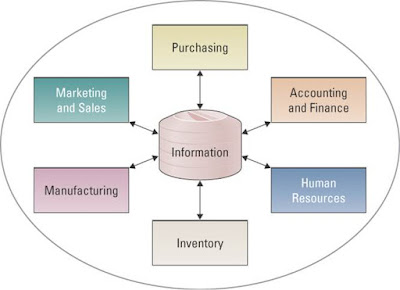MGT 300 CHAPTER 14 : CREATING COLLABORATIVE PARTNERSHIP
LEARNING OUTCOMES :















- Identify the different ways in which companies collaborate using technology
- Compare the different categories of collaboration technologies
- Define the fundamental concepts of a knowledge management system
- Provide an examples of a content management system along with it is business purpose
- Evaluate the advantages of using a workflow management system
- Explain how groupware can benefits a business
- TEAM, PARTNERSHIPS, and ALLIANCES
- Organizations create and use teams, partnerships and alliances to :
* Undertake new initiatives
*Address both minor and major problems
*Capitalize on significant opportunities
*Organization create teams, partnerships, and alliances both internally with employee and externally with other organizations
*Collaboration system can support the work of team by facilitating the sharing and flow of information

*Organizations form alliances and partnerships with other organizations based on their core competency
-Core competency is an organizations key strength, a business function that it does better than any of its competitors.
-Core competency strategy is an organization chooses to focus specifically on its core competency and forms partnership with other organizations to handle non strategic business process.
- COLLABORATION SYSTEM.
-Collaboration system is an IT based set of tools that supports he work of teams by facilitating the sharing and flow of information.
-Two categories of collaboration
- UNSTRUCTURED COLLABORATION ( information collaboration) : includes documents exchanges, shared whiteboards, discussion forums, and email
- STRUCTURED COLLABORATION (process collaborations) : involves shared participation in business processes such as workflow in which knowledge is hardcoded as rules.
-Collaborative business functions

- COLLABORATION SYSTEMS include :
- KNOWLEDGE MANAGEMENT
-involves capturing classifying evaluating, retrieving, sharing information assets in a way that provides context for effective decisions and actions
-Intellectual and knowledge based assets fall into two categories ;
*Explicit knowledge is consists of anything that can be documented archived and codified, often with the help of IT
*Tacit knowledge is knowledge that contained in people's head
-The following are two best practices for transferring or recreating tacit knowledge
*Shadowing is less experienced staff observe more experienced staff to learn how their more experienced counterparts approach their work
*Joint problem solving is a novice and expert work together on a project
-Reasons why organizations launch knowledge management progrems

-Knowledge management systems includes :
*Knowledge repositories
*Expertise tools
*E-learning applications
*Discussion and chat technologies
*Search and data mining tools
- SOCIAL NETWORKING

- CONTENT MANAGEMENT SYSTEM
-Content management system is provides tools to manage the creations, storage, editing, and publication of information in a collaborative environment.
-CMS marketplace includes :\
* Document management system (DMS)
*Digital assets management system (DAM)
*Web content management system (WCM)
*DOCUMENT MANAGEMENT SYSTEM (DMS)
-to support the electronic capturing, storage, disribution, archival and accessing of documents

*DIGITAL ASSETS MANAGEMENT SYSTEM (DAM)
-similar to DMS generally works with binary rather than text files, such as multimedia files types.

*WEB CONTENT MANAGEMENT SYSTEM (WCM)
-adds an additional layer to document and digital assets management that enables publishing content both to intranets and to public Web sites

-Content management system vendor overview

- WORKING WIKIS
-Wikis : Web based tools that make it easy for users to add, remove and change online content
-Business wikis : collaborative Web pages that allow users to edit documents, share ideas, or monitor the status of a project
- BUSINESS WIKIS

- WORKFLOW MANAGEMENT SYSTEM
-Work activities can be performed in series or in parallel that involves people and automated computer systems
-Workflow : is defines all the steps or business rules, from beginning to end required for a business process.
-Workflow management system : facilitates the automation and management of business process and controls the movement of work through the business process
-Messaging-based workflow system : sends work assignment through an email system
-Database-based workflow system : stores documents in a central location and automatically asks the team members to access the document when it is their turn to edit the document
- GROUPWARE SYSTEMS
-Groupware technologies

-Groupware is the software that supports team interaction and dynamics including calendaring, scheduling, and video conferencing

- VIDEOCONFERENCING
-is a set of interactive telecommunications technologies that allow two or more locations to interact via two-way video and audio transmissions simultaneously

- WEB CONFERENCING
-is blends audio, video and document-sharing technologies to create virtual meeting rooms where people 'gather' at a password-protected web site.

- INSTANT MESSAGING
-Email is the dominant form of collaboration applications but real-time collaboration tools like instant messaging are creating a new communication dynamic.
-Instant messaging is the type of communications service that enables someone to create a kind of private chat room with another individual to communicate in real-time over the internet.

-Instant messaging application

thank you :)



Creating collaborative partnerships is essential for success! Hosting with DVHosting ensures your collaborative platforms run efficiently and reliably.
ReplyDelete